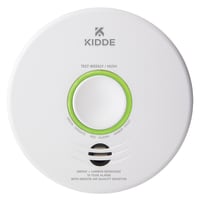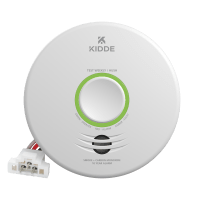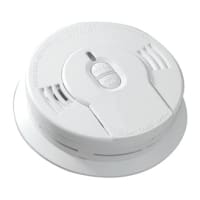How to Choose the Best Smoke Alarms for Your Home
In home fires, early warning is critical. So don’t wait until it’s too late.
Smoke alarms are one of the best and least expensive ways to provide early warning when a fire begins. When properly installed and maintained, smoke alarms can help prevent injuries and minimize property damage. And when you look at the facts, it’s clear that, in many cases, they mean the difference between life and death.
-
Nearly half of the nation's fire deaths occur in the four percent of homes that do not have smoke alarms. (NFPA)
-
The risk of dying in homes without smoke alarms is twice as high as it is in homes that have working smoke alarms. (Consumer Product Safety Commission)
-
To help ensure that your home is protected, take a few minutes to read about types of smoke alarms and tips for proper performance.
Know your types of smoke alarms
-
Ionization sensing alarms may detect invisible fire particles (associated with fast flaming fires) sooner than photoelectric alarms.
-
Photoelectric sensing alarms may detect visible fire particles (associated with slow smoldering fires) sooner than ionization alarms.
Studies show both types will effectively detect either type of fire. For optimal protection, install both smoke alarm technologies in your home to maximize the chances of escape. Kidde offers both photoelectric and ionization smoke alarms, as well as a dual-sensor model, which incorporates both technologies. Learn more about this topic and view recommendations from leading fire and safety experts. Make sure your smoke alarms are working properly.
According to the National Fire Protection Association (NFPA), in one out of five homes that have smoke alarms, none of the units work, mainly due to dead, missing or disconnected batteries. With this in mind, keeping your home safer is as simple as following a few tips.
-
Install smoke alarms on every floor of your home, in hallways, inside bedrooms and outside of sleeping areas. On average, families have less than three minutes from the time the first smoke alarm sounds to escape a fire. The sooner you hear an alarm, the more time you will have to get out.
-
Replace smoke alarms every 10 years. Alarms monitor the home every minute of every day and their lifespan is not infinite. If you don't know how old your alarm is, you should replace it.
-
Test your smoke alarm per manufacturer’s instructions and replace the batteries as needed.
-
Gently vacuum your smoke alarm monthly to prevent dirt from blocking the sensor.
-
Do not disable a smoke alarm in nuisance situations. Do not "borrow" smoke alarm batteries for other uses such as toys or radios.
-
Develop and practice a fire escape plan with the family, so that everyone knows what to do when the alarm sounds.






